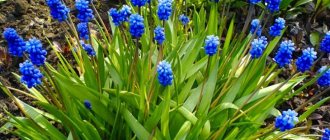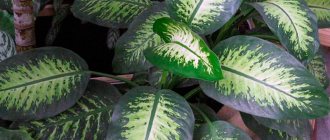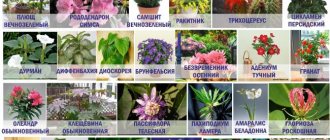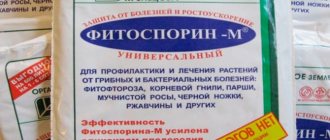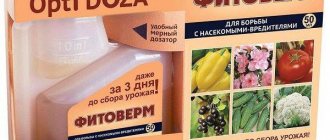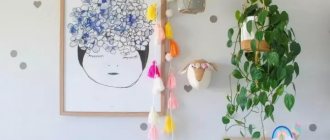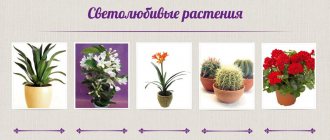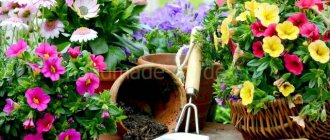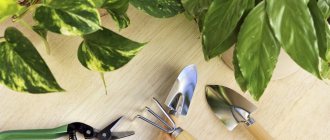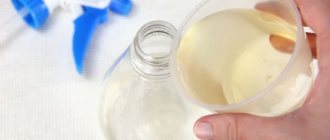Automatic watering of indoor plants during vacation
You need to use drip irrigation, a funnel, a wick, a smart pot system, or other methods. Any of these structures will protect the soil from drying out and excessive moisture, so that the plants will continue to grow fully even in the absence of the owner.
Caring for green pets
Homemade automatic watering systems
The simplest method is watering from a bottle. It’s not difficult to make such a design:
- You need to take a plastic bottle with a cap.
- Fill the container with water.
- Make a hole in the lid.
- Make several holes in the bottom to improve permeability.
- Insert the bottle into the ground with the neck down and the device is ready for use.
Important! The disadvantage of this method is that you will have to spend a lot of time and lids, selecting the rate of water flow.
Automatic watering systems from the store
If it is not possible to build a cunning structure yourself, then you need to purchase it at the store.
You can buy a polyethylene dropper or a Blumat sensor system.
A dripper for indoor plants works on the same principle as for humans, so you need to try it before you go on vacation. It is worth adjusting the moisture supply and making sure that everything will be fine with the flowers.
The Blumat system was developed by an Austrian scientist. It is a plastic cone, the tip of which is made of special clay. It is through this that moisture enters the soil. Thanks to the unique design, indoor flowers absorb the required amount of water.
Blumat system
Move plant pots away from windows, radiators and ventilation
housing.com
Grouping your plants (as we've described before) is the easiest way to control their airflow and temperature while you're away.
So, moisture-loving plants are placed in your bathtub, and succulents dry in the corner at their discretion.
But before you bring them all into one place, make sure that all plants are kept away from any variables that could change the temperature. Keep plants away from vents, windows with direct sunlight, and heaters.
These irritants can dry out your more temperature-sensitive plants faster than you think.
Drip irrigation systems for indoor plants
Today there are many drip irrigation systems from different manufacturers.
How often do you need to water indoor plants?
Basically, this kit includes:
- container;
- cone;
- droppers;
- holders;
- plugs;
- filter;
- hoses;
- hose clamp.
For the irrigation system to work, you need to install the tank above the level of the pots. This is an important rule for all systems. The cones are inserted into the pots and drippers are attached using a hose. The number of droppers directly depends on the size of the pot. All flowerpots form a common network.
For reference: the Italian GF Acqua Genius drip irrigation system can provide irrigation for 18 days to 16 plants.
There are also large structures with which you can save the lives of five thousand indoor flowers.
Make a temporary greenhouse
albergariafozdosado.com
Place a plastic container over small plants that like humidity. For example, a plastic five-liter bottle.
arinahabich
The container will create a mini-greenhouse that allows you to maintain the water and humidity cycle automatically. Also for larger plants, large plastic bags or plastic film for very large bushes are suitable.
Gardening Know How, via Liz Baessler
But in the latter case, you may have to think about a structure with poles on which this polyethylene can be attached.
see also
15 “fantastic” plants that actually exist
"Smart pots" for automatic watering
Watering indoor plants in the absence of the owners can be done using special pots. They are a double design. A flower grows in one tank, and the other is filled with water. The moisture supply can be from below or from the side. Many of these pots are equipped with an indicator, which is a float with marks on the minimum and maximum water levels.
DIY drip irrigation for indoor plants
From such pots, moisture enters the soil gradually as the soil dries. The only disadvantage of using “smart pots” is that some models are suitable only for those plants that have a well-developed root system. If the root does not reach the drainage layer, then the flower will not be able to get enough moisture. However, there are pots that are suitable for young plants. This information must be clarified when purchasing.
Attention! Such designs are used in everyday life, and not just during the holidays, because drip irrigation is preferable for many plants.
Their use has many advantages:
- the water in them is at room temperature;
- there is no risk of soil waterlogging;
- with them it will be possible to avoid diseases that are associated with improper watering;
- there will be no need to drain water from the pallets;
- no need to worry about water not getting on the plant;
- there is no need to ensure that the soil does not dry out;
- flowers can be left for a long time without care.
Smart pot
How to choose the right one?
Important! The choice of material is determined by the purpose for which it is purchased.
There are different types of hydrogel.
Agrarian
In the form of colorless granules or powder. It is universal and economical, but does not have a decorative appearance. Used as a useful additive when mixed with soil.
Hydrogel balls Aquagrunt
Colored, dense gel balls, larger in diameter. It is used for decorating or growing small indoor plants in it.
Reference. When using the substance as a primer, it must be replaced with a fresh one every couple of years.
Wick watering
Using a wick will help answer the question: how to preserve indoor flowers without watering for 2 weeks? This is exactly the case when a flower lover goes on vacation.
Pests of indoor plants and diseases of indoor flowers
This method involves creating a simple structure:
- Place a container of water next to the flowerpot, for example on a stool. It must be located above the flower pot.
- Gauze tubes (woolen threads/strips from bandages) are dipped into the bottle at one end. The other end of the tubes is lowered into the soil.
- Water will be absorbed into the threads and gradually enter the soil.
Important! The ideal material for wicks is synthetic fabrics, as they do not rot and have a long service life.
Using a wick, like other methods of automatic watering, has its advantages and disadvantages.
The main advantages of such automatic watering include:
- abundant flowering of plants, if we are talking, for example, about violets, which love wick watering;
- This method supplies moisture depending on the needs of the plant, so it cannot be flooded;
- young flowers are characterized by rapid development;
- There is no need to monitor the soil; moisture in containers can remain for several weeks.
When using wick irrigation, you should also take into account the disadvantages of this method:
- if you make the wick very thick or wide, the plant may suffer from excess moisture;
- in winter you need to monitor the water temperature; if it is cold, the plant will die;
- When watering this way, the soil should be loose and airy, otherwise the moisture will stagnate and the roots will begin to rot.
Place containers filled with water around
gardenersworld.com
You can also place containers of water around grouped plants. The water will slowly evaporate and create a more acceptable level of humidity if the air in the room is too dry. However, a temporary greenhouse is a more acceptable option for plants accustomed to high moisture. The option with a tub, basins and other containers is suitable for ordinary flora.
Using hydrogel
If you are interested in information on how to ensure watering of indoor plants in the absence of owners for a long time without the use of any structures, then a hydrogel will help here. 1 g of such a polymer material can absorb about 250 ml of water, and then gradually release it into the soil.
Flower in hydrogel
The hydrogel can be placed in a pot when planting instead of a drainage layer, or buried at a depth of 2 cm from the surface. You can also soak it for 8 hours - it will absorb water and swell. After this, it is laid out in pots and covered with damp moss on top. This is necessary so that the hydrogel does not turn into dust, since it is believed that in this form it is toxic to the body.
There are several ways to provide indoor plants with moisture, so you shouldn’t burden your friends with your problems, or refuse to go on vacation or leave the flowers to die. You just need to choose a convenient system for watering your home flowers during your vacation and go on your long-awaited trip with a pure heart.
What domestic crops are used in growing?
Hydrogel is an excellent additive for flowers that require frequent watering and is suitable for all plants that love a humid environment. For flowers with a rare watering regime, for which water is not the main priority for growth, its use is not recommended. The substance is absolutely not suitable for cacti and other succulents.
As for planting in pure hydrogel, ficus, dieffenbachia, ivies, arrowroot, dracaenas, philodendrons, syngonium, chlorophytum and ferns are suitable for this. Cacti, succulents and epiphytes are not suitable for such planting.
Advantages
- Using hydrogel when planting seeds, you can get seedlings 7-14 days earlier. At the same time, the crop yield increases significantly.
- By saturating the granules with liquid fertilizer, the plant will be provided with useful minerals for a long time.
- The soil in which the hydrogel is embedded has a loose structure, so the plant’s root system receives enough oxygen.
- The survival rate of seedlings in such soil is ensured up to 95-98%. Ornamental plants do not lose their original appearance until the end of the season.
- Beneficial from an economic point of view: 0.8-1.6 g of the substance is enough for 1 kg of soil.


